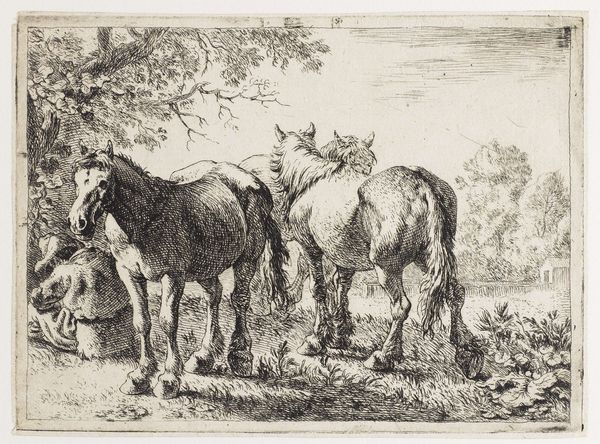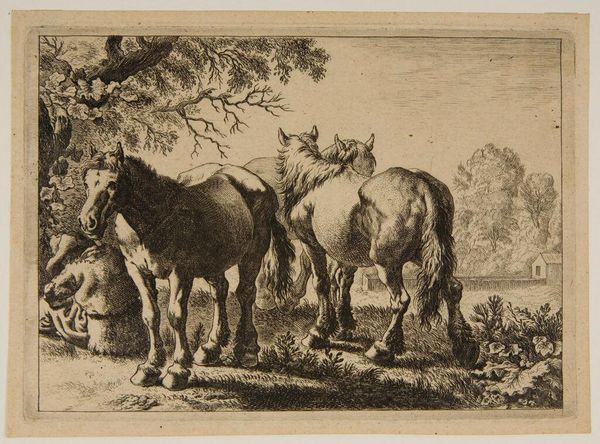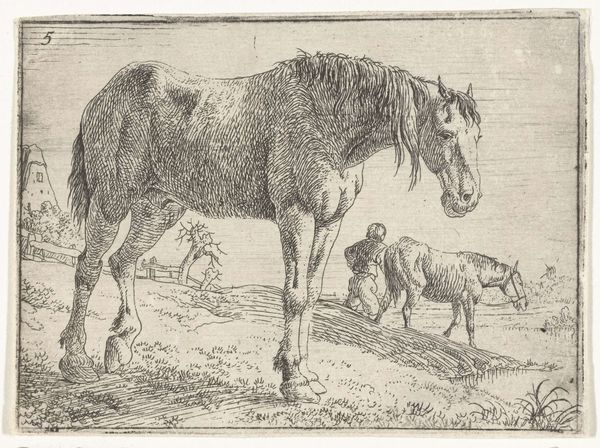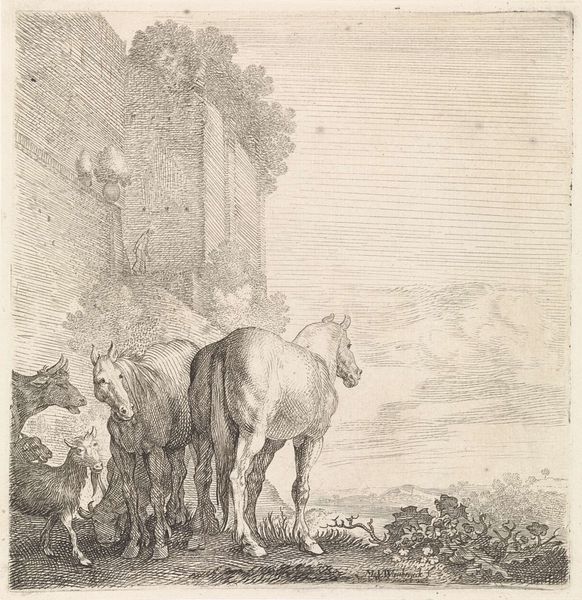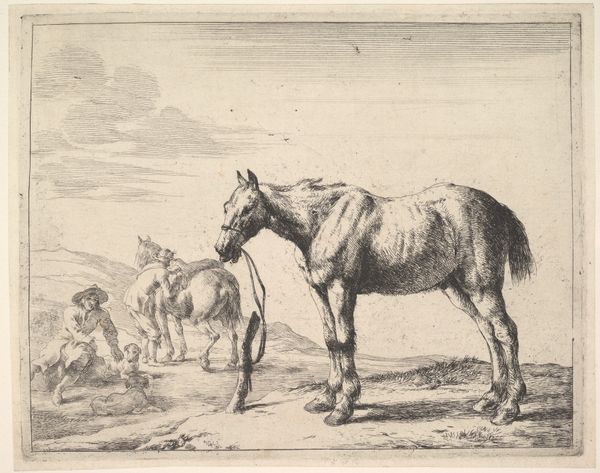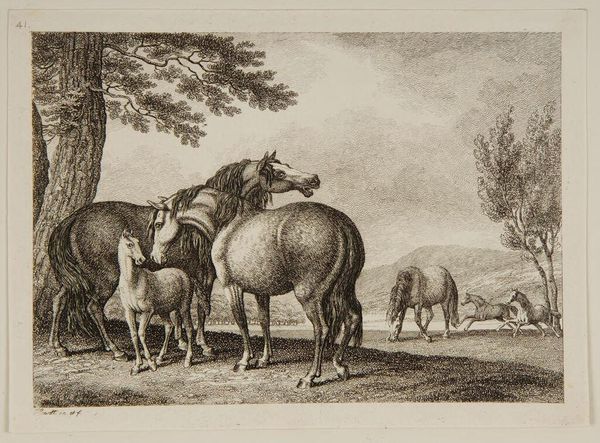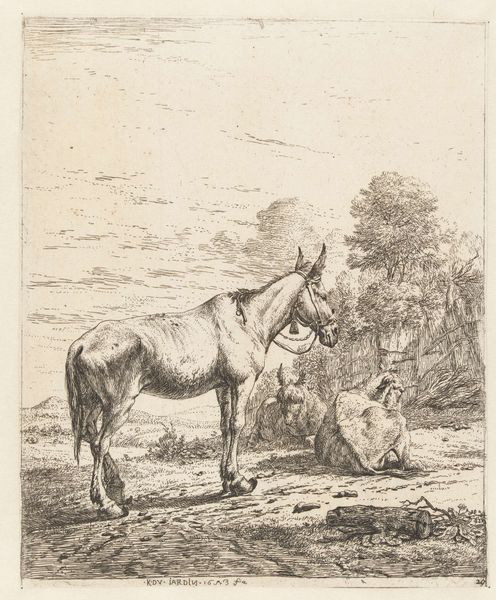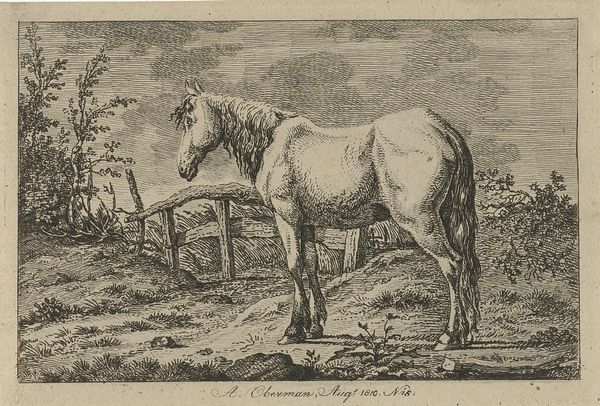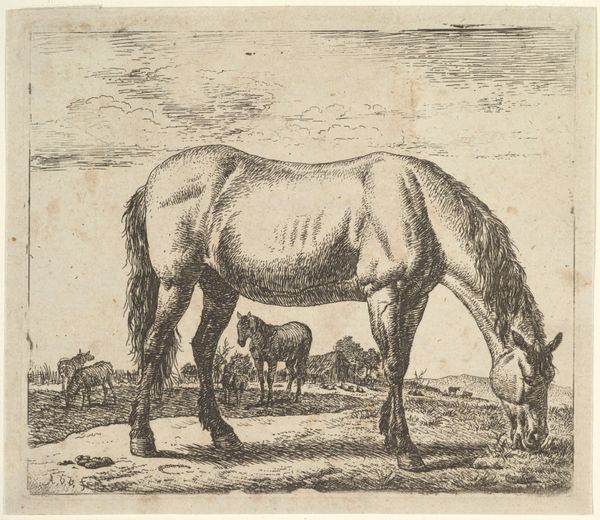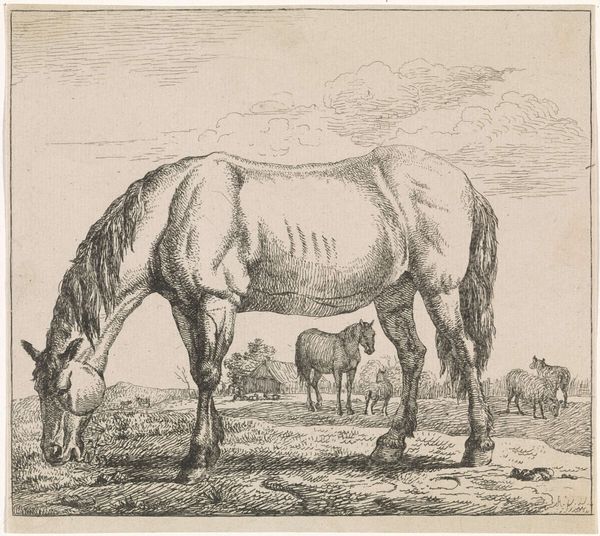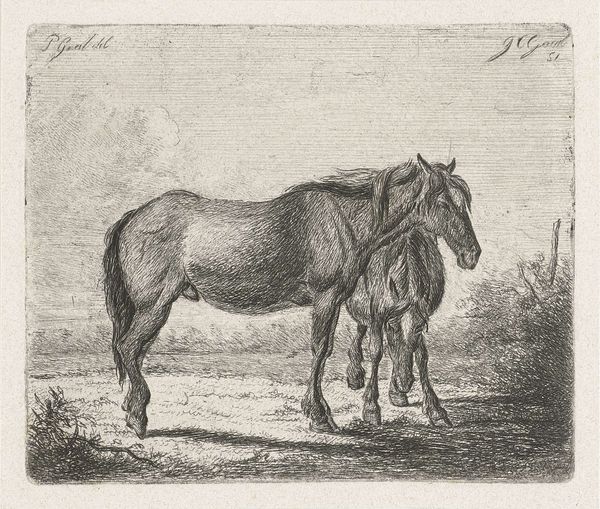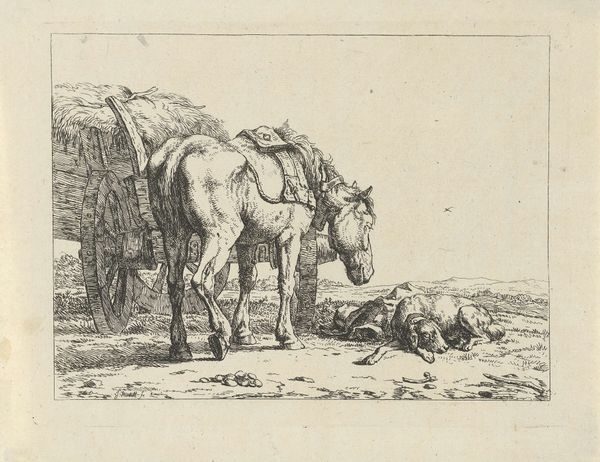
drawing, print, etching, engraving
#
drawing
# print
#
etching
#
landscape
#
figuration
#
pencil drawing
#
horse
#
watercolour illustration
#
engraving
#
realism
Dimensions: height 127 mm, width 175 mm
Copyright: Rijks Museum: Open Domain
Editor: This is "Three Horses and a Farmer," dating from 1636 to 1692, here at the Rijksmuseum. The artist is anonymous. It's an etching or engraving. I'm struck by the detail in the depiction of the horses’ bodies and the somewhat mundane scene. What can you tell me about this piece? Curator: Well, considering the material reality, the very production of this image points to a shift in art’s accessibility. Etchings and engravings democratized image-making. Unlike unique paintings for the wealthy elite, prints allowed for wider distribution and consumption. The lines here weren't made quickly by some artistic genius, but painstakingly etched by hand or using tools. Think about the labour involved. Editor: So you’re saying it’s not about the individual skill of the artist, but more about the method? Curator: Precisely. And it makes me think about its role in society. What purpose did images like this serve for the general population? Were they purely decorative, or did they offer insights into rural life, maybe reinforce social hierarchies? Look closely – how does the artist portray the relationship between the horses and the farmer? It might tell us something about agricultural labor and human/animal interactions in the Dutch Golden Age. Editor: The farmer almost seems slumped and worn out by comparison to the weightiness of the horses. I hadn't considered that relationship. So, are you suggesting this piece functions less as high art, and more as documentation or even propaganda of a particular lifestyle and production system? Curator: That’s part of it, yes. We can analyze this image through its material existence – its mode of production and its circulation, and its participation in wider economies. Don’t you find the choice of subject - these very corporeal, working animals - interesting in itself? They would have represented capital, agricultural power. Editor: I do now. Thinking about it as a commercial object definitely adds a different dimension. It reminds me how the creation of multiples enabled access, dissemination of images, and new perceptions about the role of art and its production. Curator: Exactly. We must always consider art's impact on society through accessibility, production means, consumption habits, the labor involved, and who benefits the most from all of it.
Comments
No comments
Be the first to comment and join the conversation on the ultimate creative platform.
